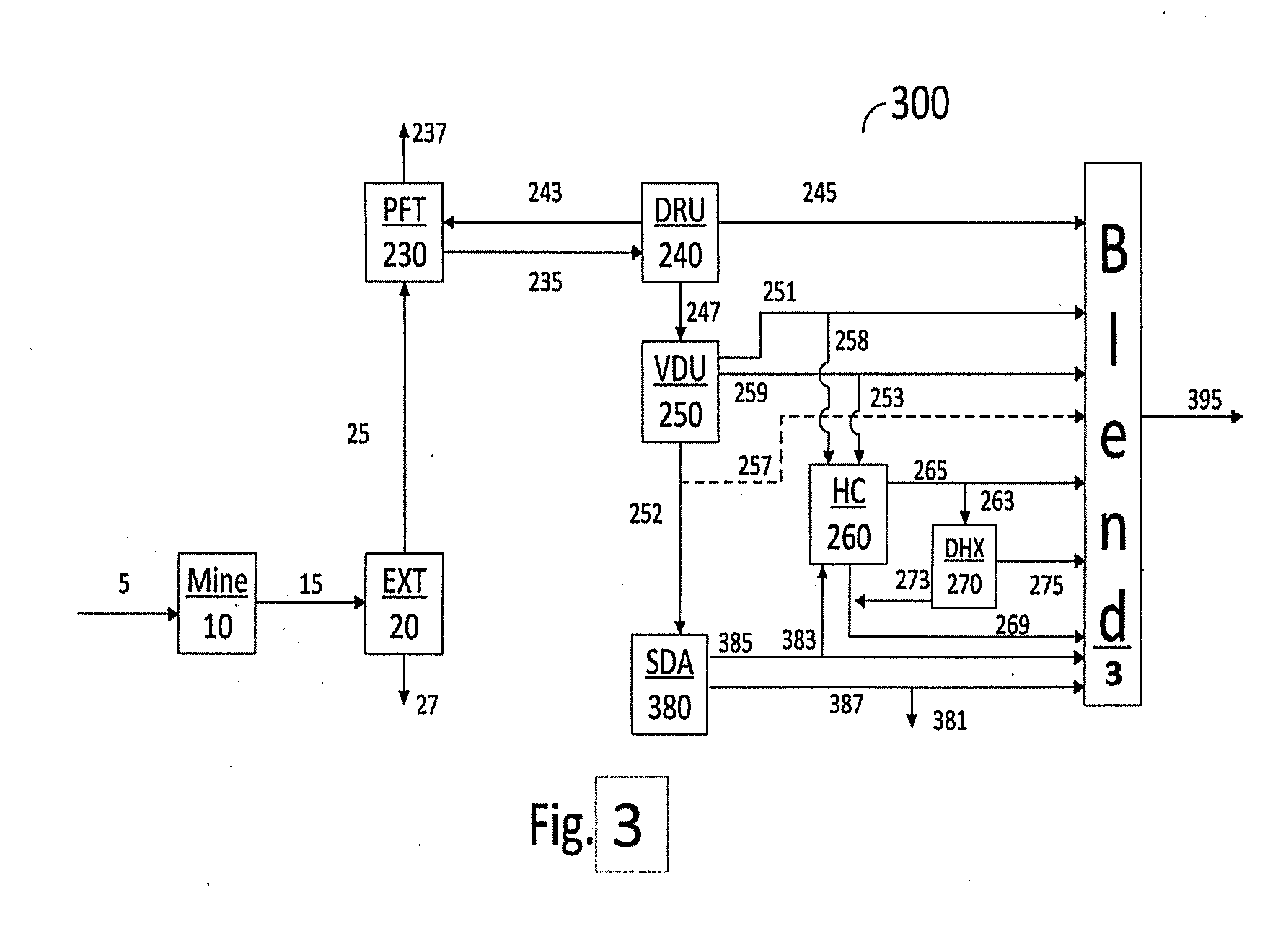Process for treating mined oil sands deposits
a technology for mined oil sands and processing equipment, which is applied in the direction of hydrocarbon oil treatment, liquid hydrocarbon mixture production, surface mining, etc., can solve the problems of over-cracking and coking of the hydrocarbon stream, the added complexity and cost of the two-stage solvent deasphalting system, and achieve the effect of contributing to the economic efficiency of the entire process
- Summary
- Abstract
- Description
- Claims
- Application Information
AI Technical Summary
Benefits of technology
Problems solved by technology
Method used
Image
Examples
Embodiment Construction
[0096]The detailed description set forth below, in conjunction with FIGS. 1 to 4, is intended as a description of various embodiments of the present disclosure and is not intended to represent the only embodiments contemplated by the inventors. The detailed description includes specific details for the purpose of providing a comprehensive understanding of the present disclosure. However, it will be apparent to those skilled in the art that the present processes may be practiced using substitutions.
Definitions
[0097]As used throughout this disclosure, the following terms have the meanings set out below:
[0098]“Asphaltenes” are complex structured hydrocarbons found within bitumen and conventional heavy oils consisting primarily of carbon, hydrogen, nitrogen, oxygen, and sulfur, as well as trace amounts of vanadium and nickel, with their boiling range above 950° F. The Carbon to Hydrogen ratio is approximately 1:1.2, and are defined operationally as the n-pentane or n-heptane insoluble c...
PUM
 Login to View More
Login to View More Abstract
Description
Claims
Application Information
 Login to View More
Login to View More - R&D
- Intellectual Property
- Life Sciences
- Materials
- Tech Scout
- Unparalleled Data Quality
- Higher Quality Content
- 60% Fewer Hallucinations
Browse by: Latest US Patents, China's latest patents, Technical Efficacy Thesaurus, Application Domain, Technology Topic, Popular Technical Reports.
© 2025 PatSnap. All rights reserved.Legal|Privacy policy|Modern Slavery Act Transparency Statement|Sitemap|About US| Contact US: help@patsnap.com



